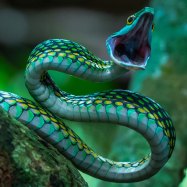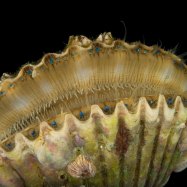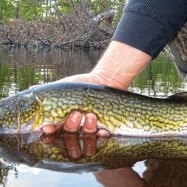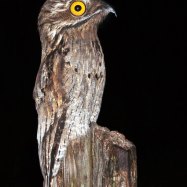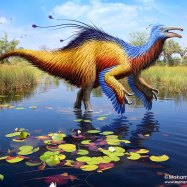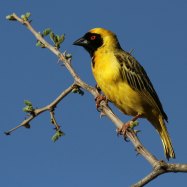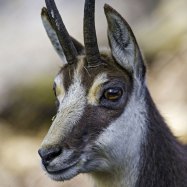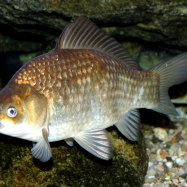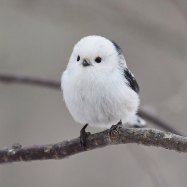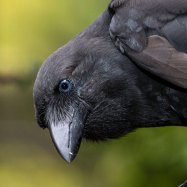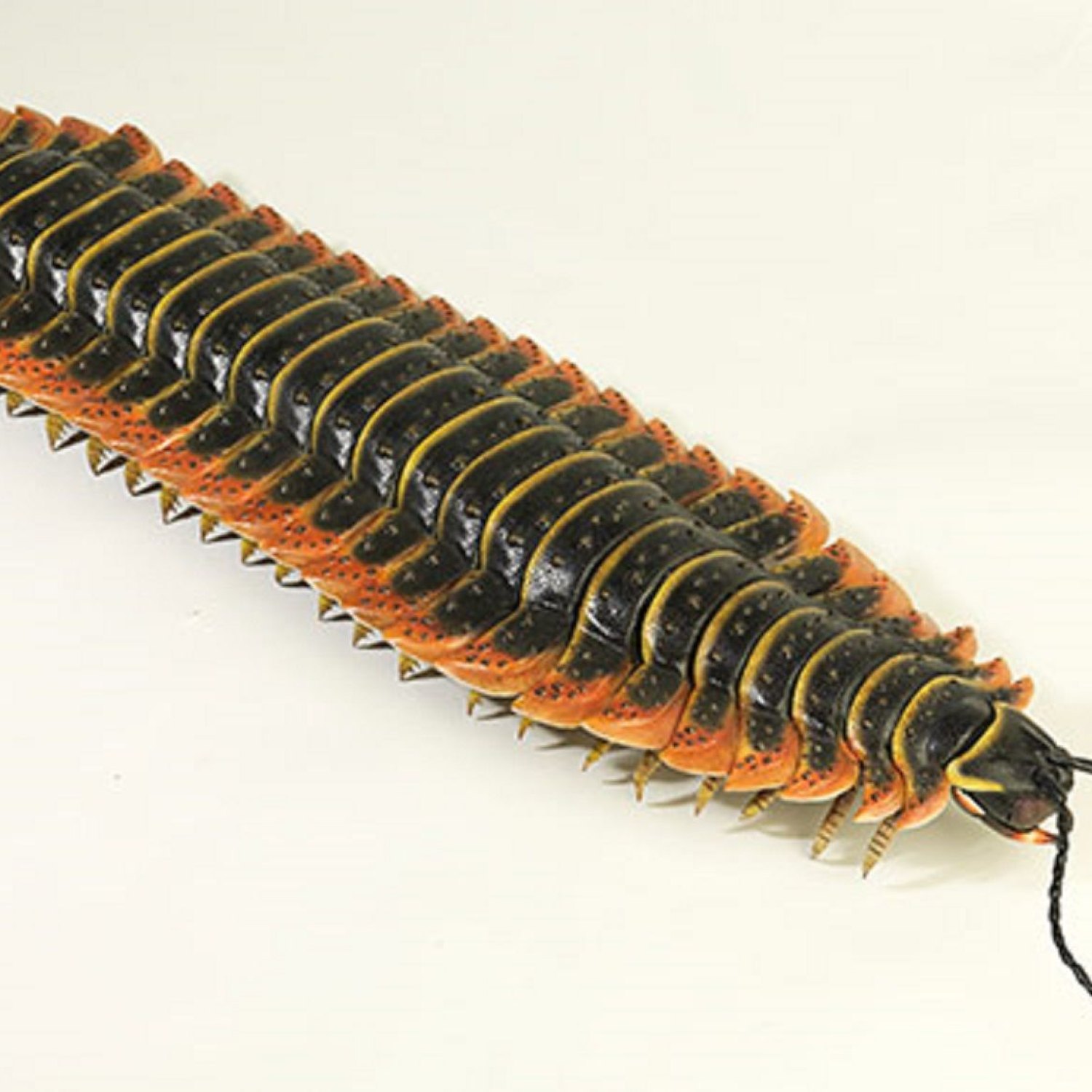
Arthropleura
Up to 2.5 meters (8 feet)
Meet Arthropleura, an ancient giant millipede from the Arthropleuridae family that roamed the Earth in the fossil record. With a jaw-dropping length of up to 2.5 meters, this long and segmented creature ruled the land millions of years ago. Its impressive size and unique body shape make it a fascinating addition to the world of prehistoric animals.
Animal Details Summary:
Common Name: Arthropleura
Kingdom: Animalia
Habitat: Tropical and subtropical forests
The Fascinating World of Arthropleura
In the vast and diverse animal kingdom, there are some creatures that continue to mesmerize both scientists and ordinary individuals. Among these creatures is the Arthropleura, a giant millipede-like creature that lived in ancient times. Its name translates to "jointed ribs," referring to its segmented appearance. Despite being long extinct, this fascinating animal has managed to capture the attention of many with its impressive size and unique features Arthropleura.Native to both North America and Europe, Arthropleura (scientific name Arthropleura) lived during the late Carboniferous to early Permian period, approximately 345 to 299 million years ago. It was a part of the Arthropoda phylum, which includes insects, spiders, and crustaceans. However, this creature belonged to a distinct class known as Arthropleuridea, making it a unique and intriguing creature.
Anatomy and Physical Appearance
At first glance, the Arthropleura may seem like a gigantic centipede or a millipede. However, it had some distinct features that set it apart from these modern-day relatives. It was a long and segmented creature, with a flattened body, typically measuring up to 2.5 meters (8 feet) in length. Its body was covered with a thick exoskeleton, which was composed of calcium carbonate and chitin. This hard outer layer acted as protection against predators and supported the animal's weight, enabling it to move on land Anomalocaris.One of the most intriguing features of Arthropleura was its impressive size. It was one of the largest land invertebrates to have ever existed, making it a dominant force in its habitat. Its body was divided into numerous segments, and each segment bore a pair of legs. The number of legs varied depending on the size and species, with some having up to 30 pairs. Each leg was equipped with sharp claws, which allowed the Arthropleura to move swiftly and dig into the ground for shelter.
Habitat and Distribution
Arthropleura lived in a warm and humid climate, which was ideal for its tropical and subtropical forest habitat. According to fossil records, it is believed that these creatures favored wet, swampy areas, making the forests the perfect environment for them. This allowed them to thrive, and they remained an important part of the ecosystem during their time.Although they were widespread in tropical and subtropical regions, their fossils have only been found in North America and Europe. This has led some scientists to believe that the distribution of Arthropleura may have been much larger, covering other areas of the world. However, as the fossil record is incomplete, this remains a subject of debate.
Feeding Methods
Being one of the largest land invertebrates, it is natural to assume that Arthropleura had a voracious appetite. However, the exact method of its feeding is still unknown. Its mouth structure, which was composed of multiple parts, suggests that it had a specially adapted mouth for grinding vegetation. This suggests that it was a herbivorous creature, feeding on plants and other vegetation found in its tropical and subtropical habitat.Importance in the Fossil Record
The discovery and study of fossils have allowed paleontologists to piece together the story of life on Earth. Arthropleura, with its impressive size and unique features, has played a vital role in this process. Fossils of these creatures have been found in various locations, providing valuable information about their anatomy, behavior, and habitat. They also give insight into the world during the Carboniferous and Permian periods, when these creatures roamed the Earth.One of the most significant fossil sites for Arthropleura is the Joggins Fossil Cliffs in Nova Scotia, Canada. These cliffs have yielded some of the most well-preserved fossils of this giant millipede-like creature, making it an important site for scientists and enthusiasts alike.
Theories about Extinction
Despite being a dominant force in its habitat, the Arthropleura eventually went extinct. The exact cause of its extinction is still debated by scientists, but there are a few theories that have been put forth. One theory suggests that the changing climate during the Permian period may have led to their extinction. The Earth was undergoing a major shift, with large-scale volcanic activity and changes in sea levels, which may have disrupted the conditions required for the survival of Arthropleura.Another theory suggests that their size may have been a disadvantage, making them vulnerable to predators and competition for resources. As the world evolved, other species may have emerged, surpassing the Arthropleura in terms of adaptation and survival.
Conclusion
In conclusion, Arthropleura was a unique and fascinating creature that roamed the Earth millions of years ago. Its impressive size, segmented body, and herbivorous diet make it stand out in the animal kingdom. Although it is now long extinct, its presence in the fossil record continues to captivate scientists and individuals interested in the world's ancient creatures. Through continued study and discovery, we may yet uncover more secrets about this giant millipede-like creature and its role in shaping the world as we know it today.

Arthropleura
Animal Details Arthropleura - Scientific Name: Arthropleura
- Category: Animals A
- Scientific Name: Arthropleura
- Common Name: Arthropleura
- Kingdom: Animalia
- Phylum: Arthropoda
- Class: Arthropleuridea
- Order: Arthropleurida
- Family: Arthropleuridae
- Habitat: Tropical and subtropical forests
- Feeding Method: Herbivore
- Geographical Distribution: North America and Europe
- Country of Origin: United States and Europe
- Location: Fossil record
- Animal Coloration: Unknown
- Body Shape: Long and segmented
- Length: Up to 2.5 meters (8 feet)
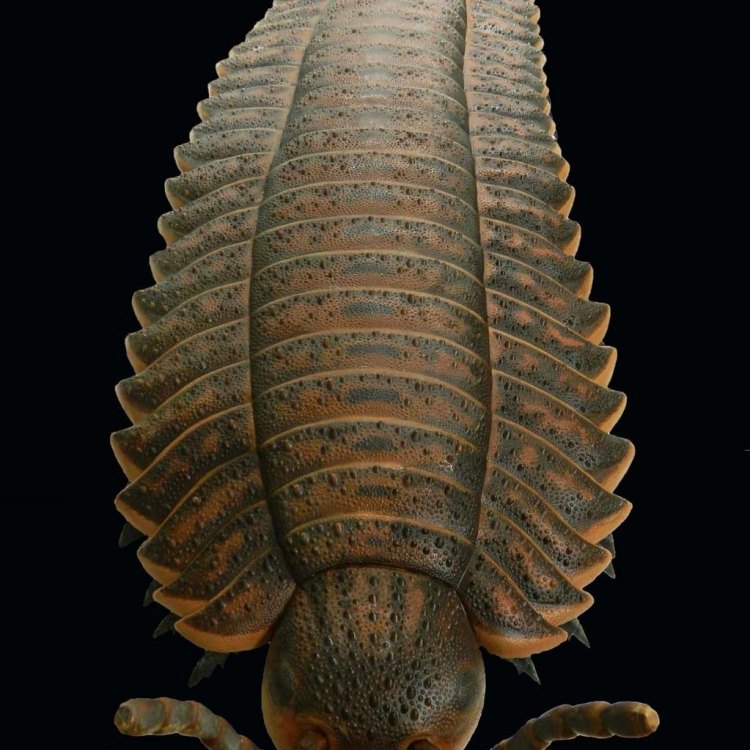
Arthropleura
- Adult Size: Large
- Average Lifespan: Unknown
- Reproduction: Eggs
- Reproductive Behavior: Unknown
- Sound or Call: None
- Migration Pattern: Non-migratory
- Social Groups: Unknown
- Behavior: Unknown
- Threats: Extinct
- Conservation Status: Extinct
- Impact on Ecosystem: Unknown
- Human Use: None
- Distinctive Features: Segmented body with numerous legs
- Interesting Facts: One of the largest arthropods to have ever lived
- Predator: Unknown
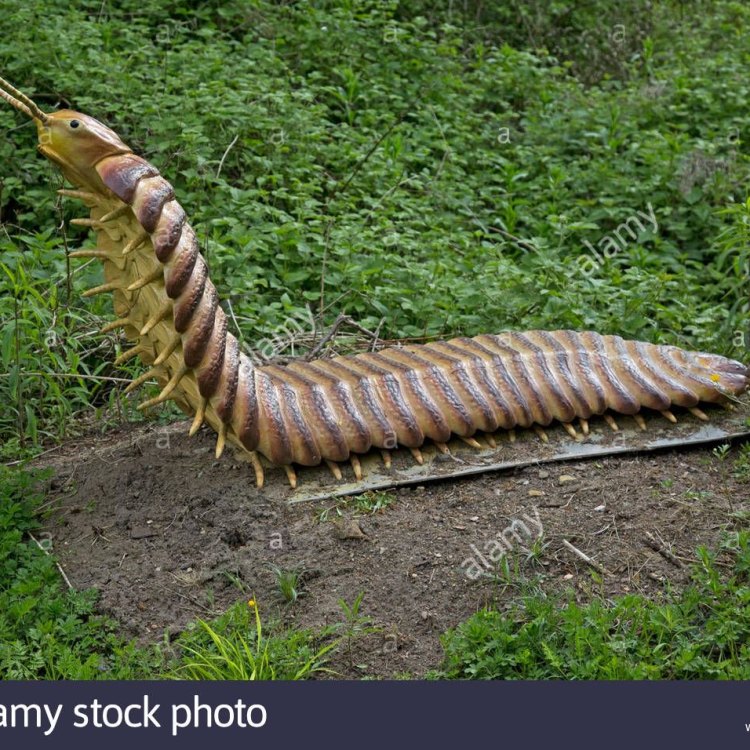
Arthropleura
Exploring the Fascinating World of Arthropleura: One of the Largest Arthropods to Ever Roam the Earth
The world is full of extraordinary creatures, some of which have been long extinct. One such creature is Arthropleura, a fascinating giant arthropod that lived on Earth during the Carboniferous period, around 315-300 million years ago. With its enormous size and unique features, Arthropleura continues to captivate the imagination of scientists and paleontologists to this day. In this article, we will delve into the world of this ancient giant and uncover its distinctive characteristics, behavior, and impact on the ecosystem PeaceOfAnimals.Com.Large Adult Size:
One of the most distinctive features of Arthropleura is its massive size, making it one of the largest arthropods to have ever lived. Adult Arthropleura could grow up to 8.5 feet in length and could have weighed over 1 ton, which is equivalent to the weight of a modern-day rhinoceros. These enormous creatures had a segmented body and could have as many as 30 segments, each with its own pair of legs.
Average Lifespan:
Unfortunately, not much is known about the lifespan of Arthropleura. Since they went extinct millions of years ago, it is challenging to determine their exact lifespan. However, based on the fossil records, it is estimated that these creatures had a relatively long lifespan, possibly up to 5 years.
Egg Reproduction:
Like most arthropods, Arthropleura reproduced through eggs. Female Arthropleura would have laid their eggs in a moist and protected environment, such as underground burrows Avocet. These eggs would then hatch into miniature versions of the adults, known as nymphs.
Reproductive Behavior:
The reproductive behavior of Arthropleura remains a mystery. Since no living specimens have been found, it is challenging to determine their behavior accurately. Some theories suggest that they may have engaged in a solitary or communal mating behavior, while others propose that they were entirely solitary creatures.
No Sound or Call:
Another interesting fact about Arthropleura is that it did not produce any sounds or calls. Most arthropods use sound to communicate and attract mates, but it is believed that Arthropleura did not have this capability.
Non-Migratory Migration Pattern:
Unlike many other species, Arthropleura was non-migratory. It is believed that these creatures lived their entire lives in a single area, possibly due to their size and slow-moving nature.
Unknown Social Groups and Behavior:
The social groups and behavior of Arthropleura are still a mystery. It is unclear whether these creatures were social or solitary and what their behavior was like. Some researchers propose that they may have lived in small groups, while others suggest that they were solitary creatures.
Extinct Threats:
Despite its immense size, Arthropleura was not immune to threats. Fossil records suggest that these creatures faced numerous threats, such as predation and environmental changes. Their slow-moving nature and large size may have made them vulnerable to predators such as amphibians, reptiles, and other arthropods.
Extinct Conservation Status:
Sadly, Arthropleura is an extinct species, and therefore, its conservation status is extinct. These creatures went extinct around 300 million years ago, along with many other species during the Permian-Triassic extinction event.
Unknown Impact on Ecosystem:
The impact of Arthropleura on the ecosystem is still unknown. However, being one of the largest arthropods to have lived on Earth, it is believed that they may have played a significant role in the ecosystem by helping with nutrient cycling and soil replenishment.
No Human Use:
Unlike other species, Arthropleura had no use for humans. Since they went extinct long before the existence of humans, there is no evidence to suggest that humans used them in any way.
Distinctive Features:
Apart from its massive size, Arthropleura had several distinctive features that made it stand out from other arthropods. Its body was divided into numerous segments, each with its own pair of legs, making it a highly capable and agile creature. It also had a hardened exoskeleton, which provided protection and support to its body.
Interesting Facts:
Apart from its size, there are many other interesting facts about Arthropleura. It is considered to be one of the largest land invertebrates to have ever existed, comparable in size to modern-day crocodiles. Its diet remains a mystery, but it is believed that it may have been a herbivore, feeding on plants and decaying matter.
Unknown Predator:
Despite being a massive creature, not much is known about the predators of Arthropleura. Since they lived millions of years ago, it is challenging to determine which species may have preyed on these giant arthropods.
In conclusion, Arthropleura is an intriguing species that continues to capture our curiosity even after its extinction. Its massive size, unique features, and mysterious behavior make it an enigma of the ancient world. While there is still much to learn about this ancient giant, its existence provides us with a glimpse into the diverse and fascinating world of prehistoric creatures.
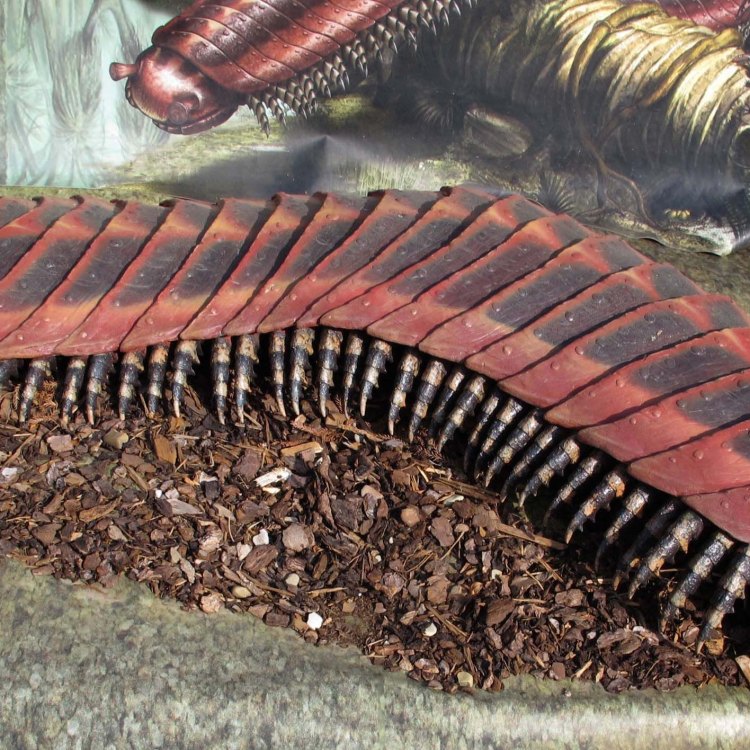
The Fascinating World of Arthropleura
Disclaimer: The content provided is for informational purposes only. We cannot guarantee the accuracy of the information on this page 100%. All information provided here may change without prior notice.


